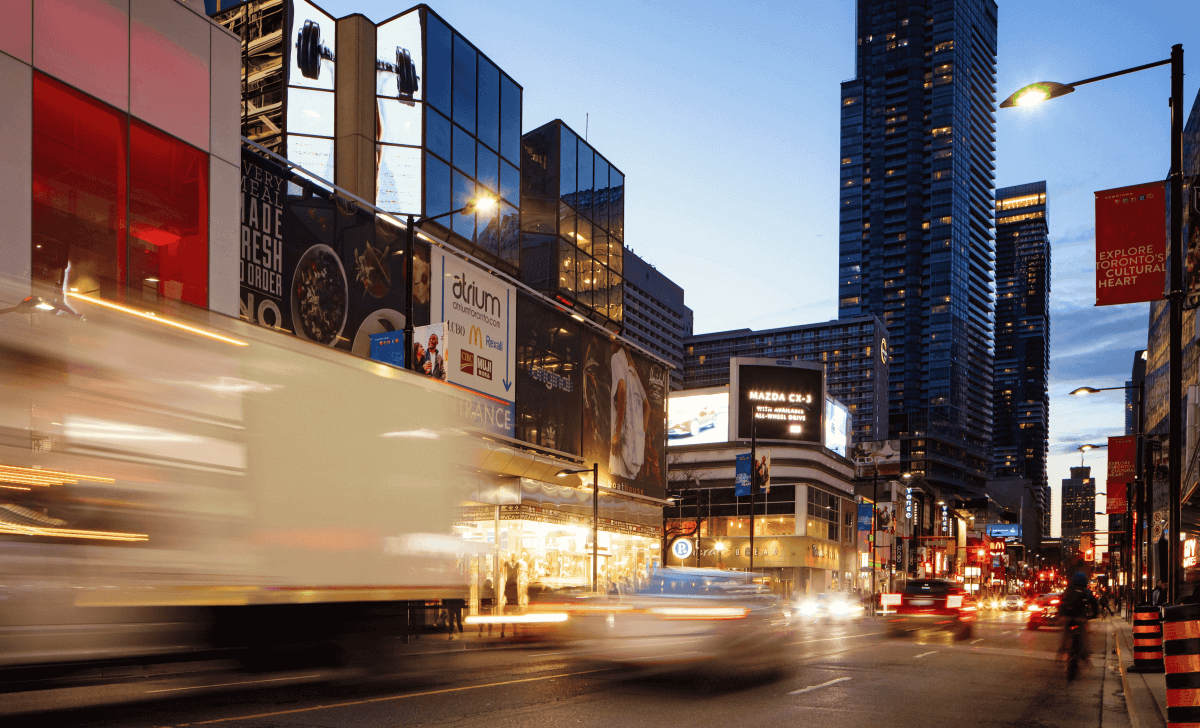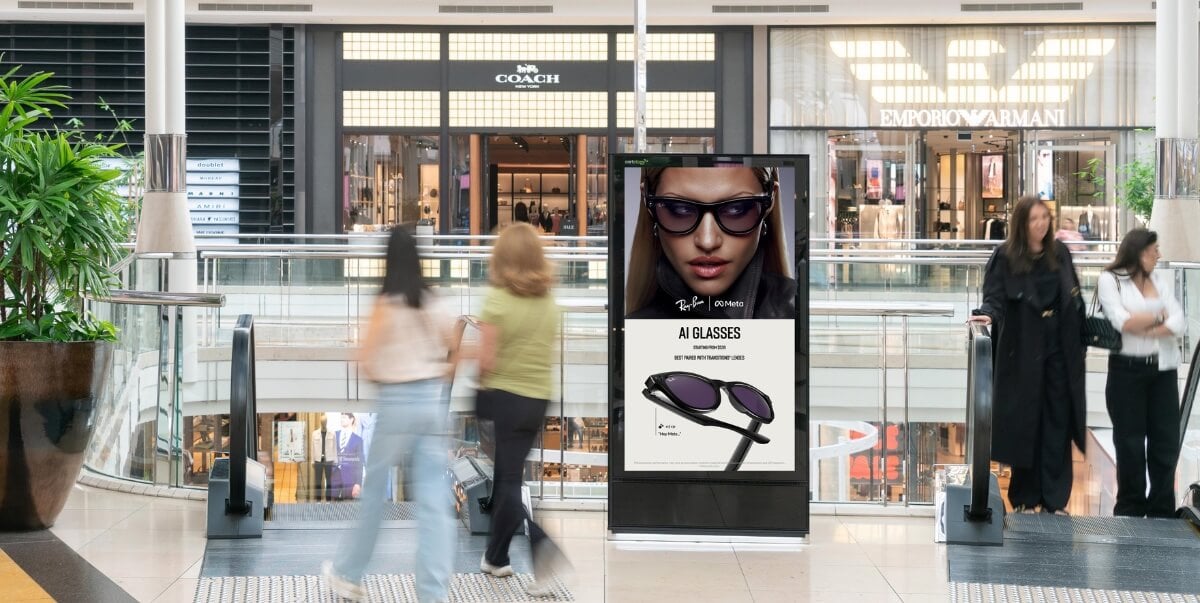
We recently (virtually) sat down with Debbie Drutz, President of NOVUS Canada, to hear her thoughts on the state of the OOH industry and better understand how programmatic buying fits into her organization and clients’ businesses. A preferred partner of Vistar, NOVUS Canada is the largest OOH and print planning and buying specialist agency, and Debbie brings her 20+ years of industry knowledge and expertise to the organization. Debbie is tasked with shaping the strategy and vision of the company, and driving growth for NOVUS and its partners.

Tell us about your role at NOVUS. How's it different from previous OOH roles you’ve had?
I’m currently leading NOVUS Canada, the largest OOH/print planning and buying specialist agency. With employees in Toronto and Montreal, NOVUS Canada provides unparalleled geospatial analytics and media management services for both English and French markets. With location-based planning at the core of our business, and access to industry-leading data and proprietary planning tools, we support multiple category-leading agency partners and direct retail advertisers by buying media at scale leveraging our data-driven approach to maximize ROI and minimize waste.
I hadn’t worked in an ad agency since 1999, having previously led cross-functional multimedia sales teams at Bell Media, Rogers Media and Astral. It’s exciting to be back from the “dark side,” but more importantly, I’m excited about leading passionate people and attracting diverse talent to rebuild the shop. Despite moving to the buy-side of our industry, it’s pretty similar to the roles I’ve always gravitated to; customer-centric, unique and trailblazing businesses that use the inherent core competencies of the company but are specialized to drive results.
As a veteran in the out-of-home industry, how have you seen the landscape change since you’ve begun working within it?
Three moments stick out to me: 1) I remember 10 years ago launching NFC-enabled street furniture in Toronto and most of my colleagues telling me to “stick with just selling posters” and forget about technology, as customers would never use their phones to engage with static or digital screens. 2) Devoting time to augmented reality and OOH, launching an AR/street level campaign that won an MIA that year. 3) Being the first sales organization to formally launch programmatic OOH at scale in 2017 with the hopes of accelerating automation and building measurability and efficiency in our industry.
As an early adopter of technology and being hired back then to bridge the gap between the physical and digital worlds in OOH, it’s exciting to see that these capabilities are starting to take shape and that our industry has become the 2nd fastest growing media next to digital and all of these campaigns that launched 10 years ago will be part of every conversation today.
We’ve developed a great partnership between Vistar and NOVUS. How did you come to working with Vistar, and what led you to choose Vistar as NOVUS’ preferred programmatic digital out-of-home partner?
I value all of the work that is being done in the automated buying space for DOOH. The more we spend building our capabilities, and educating marketers on the role we play to drive results, the more opportunity we’ll have as leaders to prove its efficacy and place in our advertising ecosystem. Earlier, I would have said functionality and features may have been a USP, but what’s truly important today is alignment and support of our business objectives as well as those of our clients. As NOVUS manages business across North America, with the need to support clients at a very local level across Canada and the US and being the centre of excellence for OOH for the agency, it is important that we leverage a buying platform (Vistar) that provides us efficiency and scale. Maximum inventory in both regions with deep local access to suppliers within both postal and zip code trading areas is critical for us to succeed, especially during these times where resources and advertising investments are limited.
We need a platform that has the ability to leverage our geo-spatial custom segments produced in our proprietary planning tool, NOVUS COMPASS, as efficiently as possible, and if you know me well, a trusted team to support our efforts and build capabilities as they arise. As programmatic is defined as the mechanism of automating buying and selling of DOOH, it still requires the dedication, expertise and commitment from people to ensure we’re delivering on the expectations of our clients.
As a leader who built up NOVUS’ programmatic expertise, what recommendations do you have for others in the industry looking to advance their own programmatic capabilities?
I would start by looking within your organization to understand the investments you are making in the DOOH space and with whom and list the priorities for your specific organization to succeed. You can then interview the various platforms to ensure you have a clear understanding of what’s available to you and what’s required of them for you to work as efficiently as possible within this buying environment.
When does it make sense to leverage a programmatic platform? What unique benefits does the Vistar platform provide you and your clients?
We continue to see enhancements and additions to the DOOH space, but static still plays an important role in our industry and continues to represent a significant portion of our advertiser spend. We continue to review a few key priorities to identify when we should or shouldn’t leverage p-DOOH. All of the following items are considered if we’ve recommended DOOH, to determine whether we should execute a buy programmatically on Vistar’s platform:
1. Geographic focus – general or specific
2. Investment / rate as a priority
3. Maximize impressions to a desired audience
4. Delivery – guaranteed or not
5. Flexibility in timing
How have you seen your clients’ OOH strategies evolve since the onset of COVID-19?
We saw initial concern from our advertisers, like everyone else in our industry did. We have maintained consistent check ins with them to communicate the benefits of our industry and the relevancy it provides, one venue type and location at a time.
What education has been required to get clients to understand the benefits of running OOH programmatically?
With programmatic OOH still emerging, we continue to educate planning teams and direct clients of the benefits of buying through a p-DOOH platform. Education around how the ad server functions, and the value it offers over a direct buy, continues to be a focus for us. It’s also essential for us to educate clients on the fact that p-DOOH is not an “all or nothing” tactic. It’s typically used as a buying tactic within a larger OOH plan.
Where do you see the out-of-home industry going in the next 1-2 years? 5 years? 10 years?
As we’ve all witnessed the acceleration of digital and the obstacles we faced during lockdowns, in the next 1-2 years, I see media owners prioritizing SSP/DSP connections and adding more digital screens to their networks, as well as buyers yearning for a creative way to move from non-guaranteed to programmatic guaranteed to really accelerate buying p-DOOH. In 5 years, omnichannel DSPs will have all of the capabilities that our current technology platforms have, so I’m excited to see the acquisitions that will take place in our industry. In 10 years, I hope we’ve grown the OOH share of advertising spend and are considered a must buy within a marketer’s media mix.



